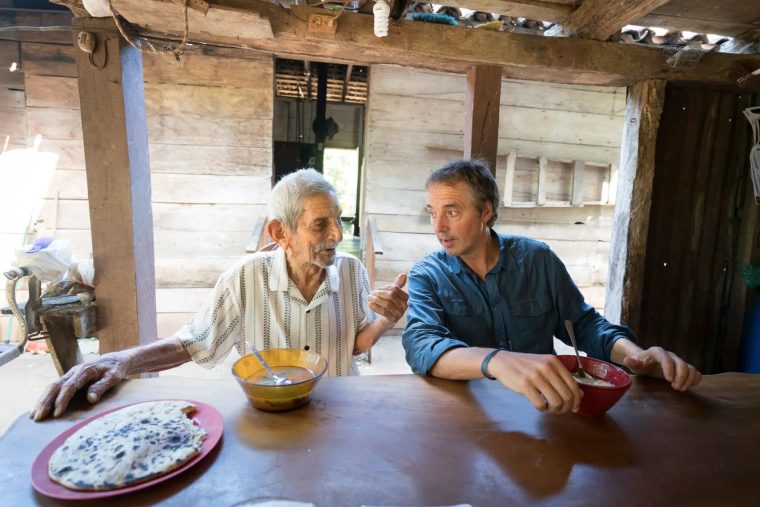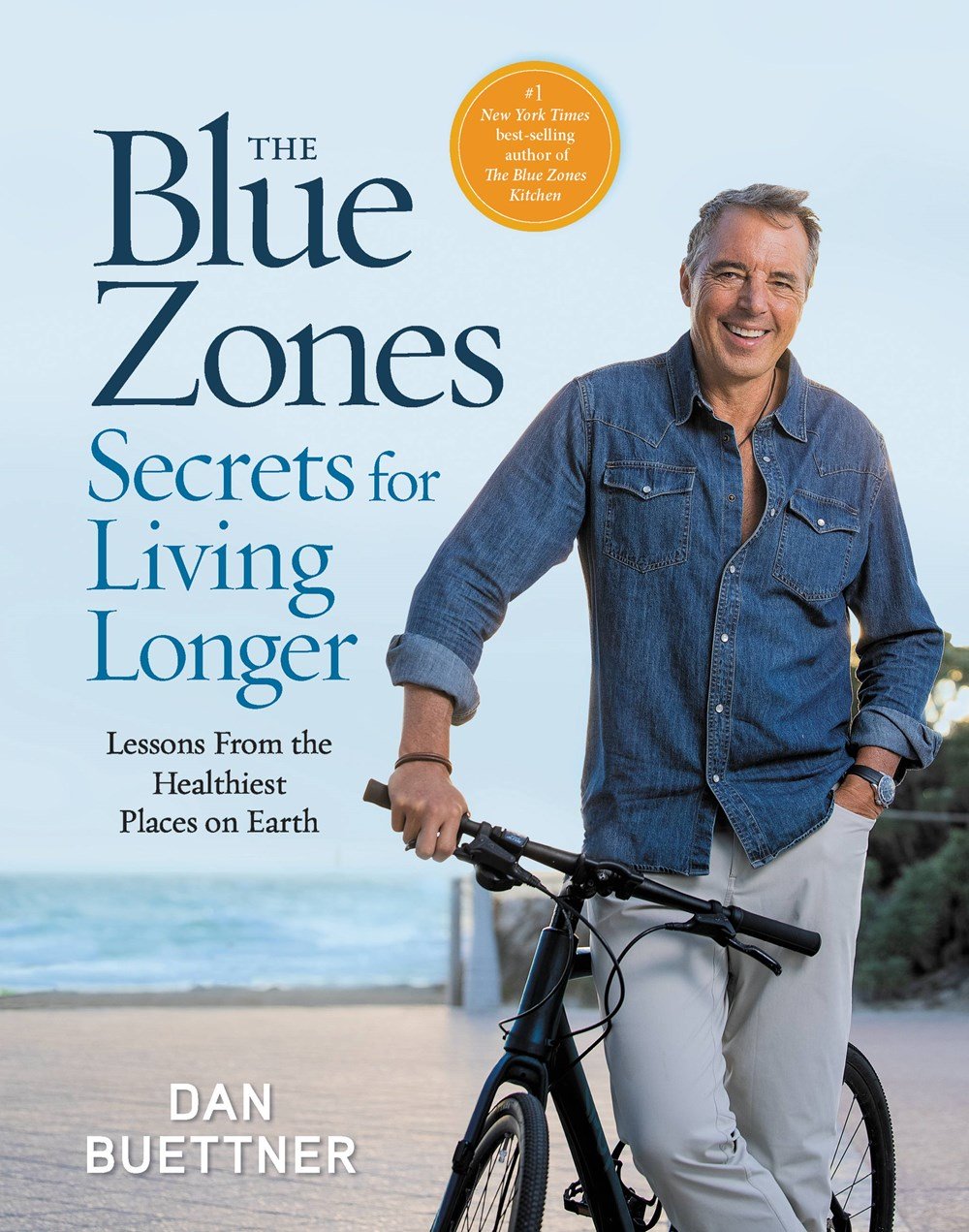Collectively, we don’t eat enough salad, and I think we all know that well enough to call it a “fact”—but where do we go from there?
Do we have to spiral down in horror at the thought of all the micronutrients we’ve missed over the years? No, we don’t! We can remind ourselves that change only happens from the present forward and that, the lower your current rate of salad consumption, the more room you have for improvement. (In a weird way, your opportunity is bigger because you’ve skipped out all this time!)
Do we have to convince ourselves that we actually love the bland, artless, half-limp iceberg salad in front of us when, truth be told, it’s boring as hell? No, we don’t! We can tear down that old, bland, tired picture of salad and learn how to make it interesting and zingy and nutritious, from the ground up. Or, rather, from the greens up.
So without further ado…

As followers will know, I’m all about plant-based ways of eating, because they’re some of the healthiest for you without requiring you to sacrifice flavor.
In Editions 40 and 41, I gave my two-part breakdown of the Caesar salad, and in those articles, I tried to expand upon a specific salad that’s already well-liked.
This time, I’m taking a roots-up approach and starting with the most essential salad ingredients—the greens themselves—in hopes that it’ll crack open a wider interest in salad and help you find or create salads you genuinely enjoy without having to smother them.

First, just so we all have a general sense of options, here are quick-and-dirty notes on nine of the most common salad greens and, in case it’s not obvious, this list is far from exhaustive…
Iceberg Lettuce: Nothing wrong with it, but there’s also not a lot going for it. What it lacks in flavor, it… well, also lacks in nutritional value (compared to other salad greens)!
Romaine Lettuce: Popular and relatively blasé, like iceberg, but with more micronutrients and (I think) more character. Probably my filler lettuce of choice.
Spinach: Also popular, also mild and inoffensive, but now we’re getting more serious about the density of micronutrients. If you’re averse to bitterness or want smaller leaves, use baby spinach.
Spring Mix: Per the “mix” part of the name, it’s a (non-standard) blend of several different lettuces—like green leaf, red leaf, green chard, mizuna, tango, and others—all of which means, firstly, that you can get familiar with several kinds of greens at once.
Arguably more crucial, though, is the “spring” part of the name, because it means you’re eating younger greens which tend to be milder in flavor (i.e. sweeter and less bitter) and still just about as nutritious. That’s a definite win-win for the salad newbies of the world!
50/50 Blend: It’s half spring mix and half spinach, and that’s about all there is to it. But it’s definitely handy and widely available, so it’s a good option to be aware of.
Arugula: Arugula’s weird, but also rather lovely. Arugula is often described as “bitter,” but not because it’s especially bitter (certainly not relative to this list). I think it’s because the rest of the flavor isn’t nearly so easy to pin down in words; there’s a peculiar kind of tartness and pepperiness that makes it unique. It’s also the kind of salad green you could dislike on its own, but love once it’s finished and dressed a certain way.
Kale: Its flavor—and also texture, given the odd shape of the leaves—can be a tad divisive, but only a tad, because kale is nutrient-dense, overall mild in flavor, and shockingly versatile. For instance, it’s probably the only item in this list that could ever be prepared like fried potato chips, and well enough to trick you in a blind taste test.
People like to jab at kale, but it only became a target of derision because it became popular with the health-food crowd… and it did have some good reasons for becoming popular with that crowd in the first place.
Swiss Chard: Part of the amaranth family along with beets and spinach (and in terms of bitterness, chard is between them and leaning towards spinach). Chard leaves are as nutrient-dense as their bright colors and big, venous leaves would suggest—but if you’re intimidated and want an easy on-ramp to chard, bear in mind that this is one of those greens you can sauté or use in soup, much like spinach or bok choy.
Microgreens: This is actually a pretty big category unto itself, because the nutshell explanation of “microgreens” is that most of them are just baby versions of adult plants we already know (harvested after 1-2 weeks rather than, say, 4-8 weeks). Still, their nutrient density is often through the roof, and their flavors can vary tremendously—from fresh and mild to spicy and complex—and this makes them fantastic salad-green candidates.
Now, here are my three pieces of advice if you’re wanting to open up your tastes and widen your salad palette:
1️⃣ Get on one or more paths to salad-green discovery. You have to be open to trying things, but the opportunities are easy to find. For instance: locate a high-quality salad bar, then bring a friend and an appetite (because it really is easier to discover and enjoy new foods if you start out hungry).
If your family or friend circle has a “salad whisperer” in the fold—someone who can work magic with a bowl and tongs—follow them as far as you dare. Ask them questions.
Lastly, one more simple and practical idea: whenever you’re making salads, use a mixture of greens you know you like and greens you want to try. It’s a good way to “hedge your bets” so you don’t waste entire salads. (This is also why I recommend trying spring mix if you haven’t already.)
2️⃣ Don’t skimp on essential ingredients. This is not to say that more expensive is always better (it’s not), but it is to say that you usually get what you pay for. So let’s talk a little about what you’re getting if you’re only willing to pay the lowest possible prices…
You know how fruit changes as it ripens—for instance, how a banana will go from green to yellow to brown and taste different each step along the way?
Well, pretty much ALL produce changes as it ages, and it’s just a question of how that happens and how long it takes. This fact presents two problems for budget salad greens:
- In general, fruits get sweeter as they ripen, but leaves get bitterer. Most of the lettuce in conventional grocery stores is bitterer than it once was, simply because the supply chains virtually guarantee that days or even weeks have passed by the time you buy it and take it home.
- Not only that, but most fruits and veggies lose moisture while they’re sitting—and when greens lose moisture, they go limp. Picture a super-fresh leaf of romaine lettuce; it’s crisp and taut enough to make a snapping sound if you break the spine, and this is because of how much water is (still) in it. That’s what we want here.
3️⃣ Don’t skimp on the prep work (particularly the washing/rinsing). No matter how good the produce you buy, it’s exposed to a lot in the time before it gets to you. Even if it weren’t, a good rinse can help to restore a noticeable amount of color and tautness and freshness, and it can also help to ameliorate less desirable flavors like excess bitterness.
In other words, the washing of salad greens is not just a technical, goody-two-shoes food-safety requirement (though, honestly, food safety should be reason enough to do it). When it comes to salad, the rinse is actually part of the flavor- and texture-building process!
I’ll return to the subject of salad sometime soon to discuss dressings, and here’s all I’ll say about that for now: if you think you dislike certain greens, the right dressing might convince you otherwise, and there will probably be culinary-science reasons for it (acidity cuts bitterness!).

Want to “reset” your health without big commitments or shocks to the system? It’s right here.
Sometimes, little distinctions hold huge value for our lives.
Take, for example, the distinction between options (foods in a buffet) and choices (what you put on your plate). That’s simple enough, but here’s why the distinction matters:
I’m guessing you mostly attribute the current state of your health, however good or bad, to your own choices.
You shouldn’t. Not as much as you currently do.
Don’t get me wrong, choices definitely matter… but I’m guessing you don’t think much about the roles that your OPTIONS have played in your health, and this has been a missed opportunity.
Let’s say you’re trying to “make healthy choices” wherever your entourage decides to eat. If you try to make a “healthy choice” at a place like McDonald’s, you’re probably destined for failure. If you try to make a “healthy choice” at a place like Chipotle… well, actually, it’s pretty hard not to!
This is a night-and-day difference between options, not between choices.
What we need to realize is that our most important choices are the ones which exert control OVER our options. The best choices set us up for success by making other “good choices” easy, thoughtless, and (in the best cases) unavoidable.
If we really want a healthy lunch, it’s far better to pick a good place than to pick apart a bad menu. Besides, why bother when the healthy place is so tasty anyway? 🤤
This is practical, well-worn wisdom that could cure each of us of a big, unhealthy temptation—that could help us “reset” towards the kind of lifestyle we really want—if only we could reflect and learn to apply it in new ways.
And this is just one tiny example! Want seven whole LESSONS like this?
Meet the 7-Day Longevity Reset.
It’s a low-stress program that aims high: give me 7 light lessons of attention and I’ll equip you to change the course of your own life. Think of it as the best advice I’ve collected from 20 years studying the world’s healthiest people, boiled down to 7 useful pieces.

I sat down with GQ’s Erin Bunch a few months back, and you can read an abridged version of the interview here.
It’s a special kind of honor to land an interview in Gentlemen’s Quarterly. I’m not usually keen to talk about myself, but I was happy to make an exception here because I appreciate that—with the blue zones gaining wider recognition and me being their most visible representative—people are naturally curious about my lifestyle.
So people ask: what kinds of foods do I actually cook and eat myself, and when do I tend to eat them?
How do I compromise between idealistic, healthy perfection and the fun, hedonistic slippages that make us all human? (Spoiler: I’ve been known to put away lychee martinis from time to time.)
The answers are in the interview! (If you hit a wall while trying to read this article, try copying the link into a new private/incognito tab. This trick isn’t perfect, but in many cases, it gives you one more “free peek” around content walls.)
PS: Erin thought to describe me in shorthand as “Indiana Jones meets Jimmy Buffett” and… you know what? I’ll gladly take it! 😆

Fennel, Tomato, and Basil Salad with Lemon Vinaigrette
Ingredients
¼ cup fresh lemon juice
1 medium shallot, finely chopped
Salt and pepper
½ cup olive oil
2 fennel bulbs, small to medium
8 Campari tomatoes
10 fresh basil leaves, washed, dried well and cut into chiffonade
The Method
- In a small bowl, combine lemon juice, shallots, and a pinch of salt and pepper.
- Whisk in olive oil in a steady stream until it is incorporated well and emulsified.
- Cut the stalks off fennel bulbs. Slice off the tough bottom end and remove any discolored outer layers. Slice each bulb in half lengthwise, and then slice fennel as thin as you can. If you have a mandoline it will be easier.
- Put slices in a bowl with room to toss.
- Stem tomatoes and cut in half. Add them to the bowl with fennel and basil.
- Toss with enough vinaigrette to coat.

It was an honor to join my friend Dean Ornish at Aspen Ideas: Health, where he shared his new research that lifestyle medicine can improve cognition and function for patients with early dementia due to Alzheimer’s disease.

Billions of dollars have been spent developing drugs for treating Alzheimer’s, but only 3 have been approved in the past 20 years. These just slow down the rate at which they get worse and often come with severe side effects and high costs.
His intervention is perfectly aligned with the Blue Zones lifestyle.
Dean is a medical doctor and I am a National Geographic fellow exploring longevity. Serendipitously we arrive at the exact same formula for cognitive health. Move naturally, Whole Foods plant-based diet, connect socially, know your purpose, and love.






